Researchers believe that they've located the wreck of the Nossa Senhora do Cabo, a Portuguese ship that was carrying $138 million worth of treasure when it was attacked by pirates in 1721.
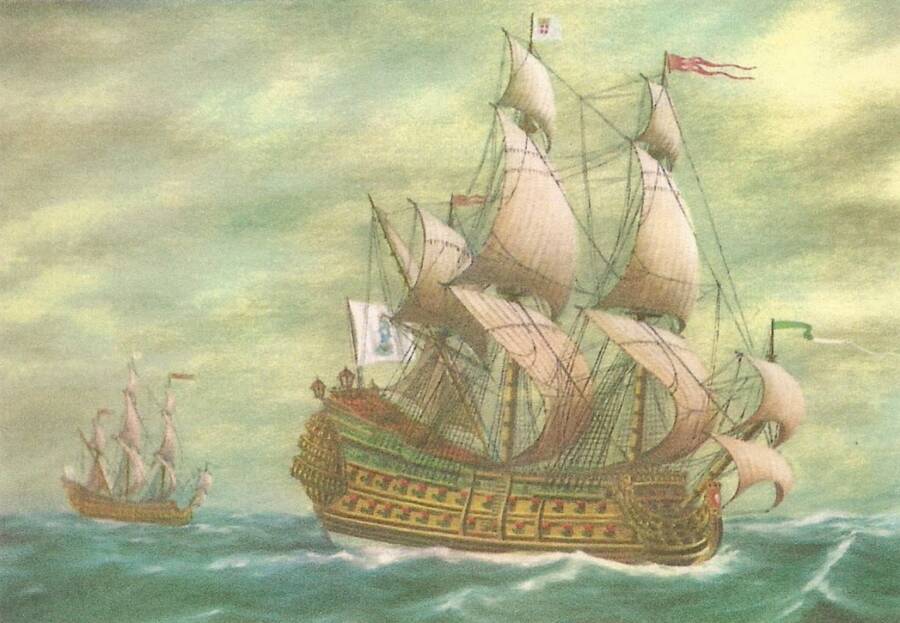
Alberto Cutileiro/Wikimedia CommonsA depiction of the Nossa Senhora do Cabo.
More than 300 years ago, a Portuguese ship carrying treasure, important religious figures, and hundreds of enslaved Africans was attacked by pirates. From that point on, the exact fate of the ship, the Nossa Senhora do Cabo, was a mystery. But researchers believe that they’ve finally located the famous shipwreck off the coast of Madagascar.
Sunken off the coast of Nosy Boraha, an island that was once home to the notorious pirate lair Île Sainte-Marie, the shipwreck appears to be the lost vessel. However, many questions about its cargo — and the people onboard — still remain.
Identifying The Wreck Of The ‘Nossa Senhora Do Cabo’ Near Madagascar
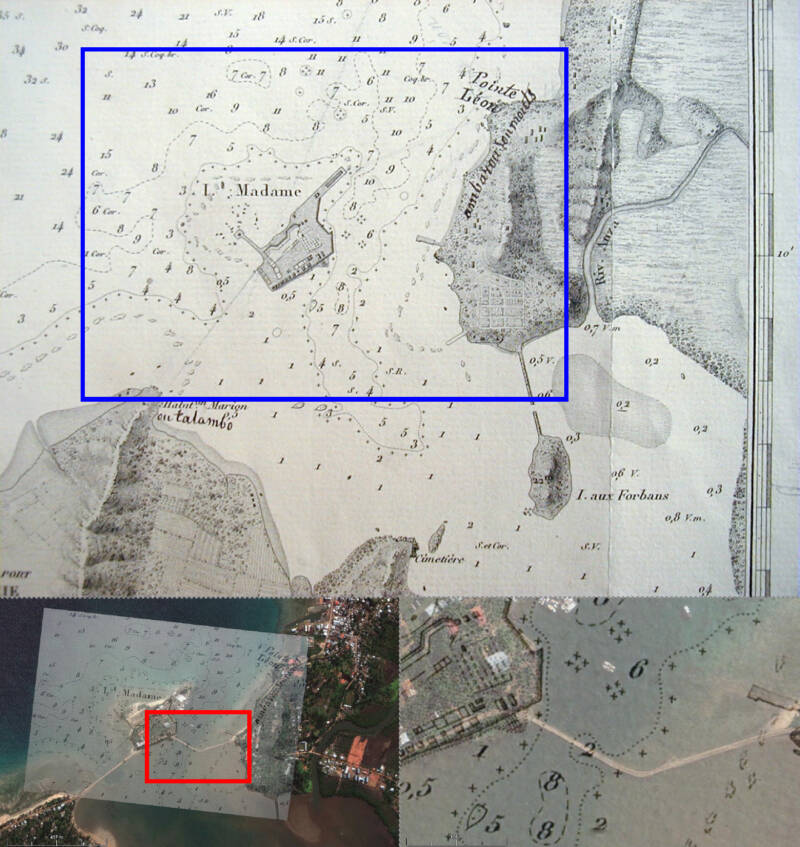
Center for Historic Shipwreck PreservationA map of the shipwreck site, which was identified near the small island of Îlot Madame near Nosy Boraha.
The identification of the Nossa Senhora do Cabo shipwreck took time. According to the Center for Historic Shipwreck Preservation, archaeologists engaged in “over two decades of fieldwork” in order to identify the wreck, which was discovered among other 17th and 18th shipwrecks in the harbor of Îlot Madame, a small island near Nosy Boraha in Madagascar. Between 1999 and 2015, experts tried to determine if one of the shipwrecks was the Nossa Senhora do Cabo, whose capture was well-documented, though its fate was unknown.
“In spite of extensive historical records describing the Nossa Senhora do Cabo‘s capture and its eventual sinking, the precise location of the shipwreck has remained uncertain, sparking debate among historians and archaeologists alike,” the Center for Historic Shipwreck Preservation noted.
However, researchers unearthed a number of clues that suggested one of the shipwrecks at the site was, indeed, the Nossa Senhora do Cabo.
During the underwater excavation, they recovered more than 3,000 objects and fragments “indicative of a high-status vessel engaged in long-distance trade.” The objects included porcelain from China, Indo-Portuguese religious sculptures, “Mughal-period” ceramics, coins from Europe, African shells, and exotic spices. These artifacts, as well as a study of the ship’s timber and the identification of a nearby cannon, seem to strongly suggest that the ship is the Nossa Senhora do Cabo.
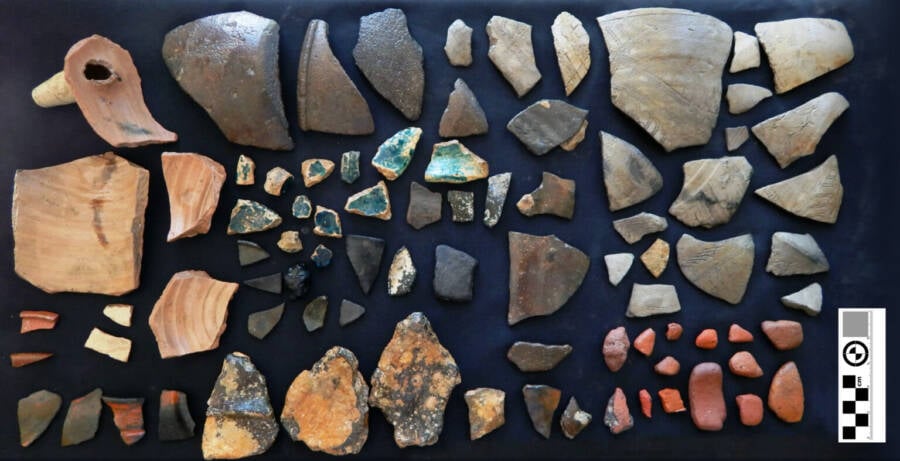
Center for Historic Shipwreck PreservationA small sample of the thousands of fragments that researchers recovered from the shipwreck site.
“Together with the structural timber evidence, these materials provide a robust material profile of a ship engaged in transoceanic trade with sacred and diplomatic associations; characteristics strongly aligned with historical records of the Nossa Senhora do Cabo,” the Center for Historic Shipwreck Preservation reported. This evidence, and primary sources, “build a strong case for the identification of the ship as… the Nossa Senhora do Cabo.”
Thus, the ship has seemingly been located three centuries after it was captured by pirates.
The Story Of The ‘Nossa Senhora Do Cabo’ Shipwreck
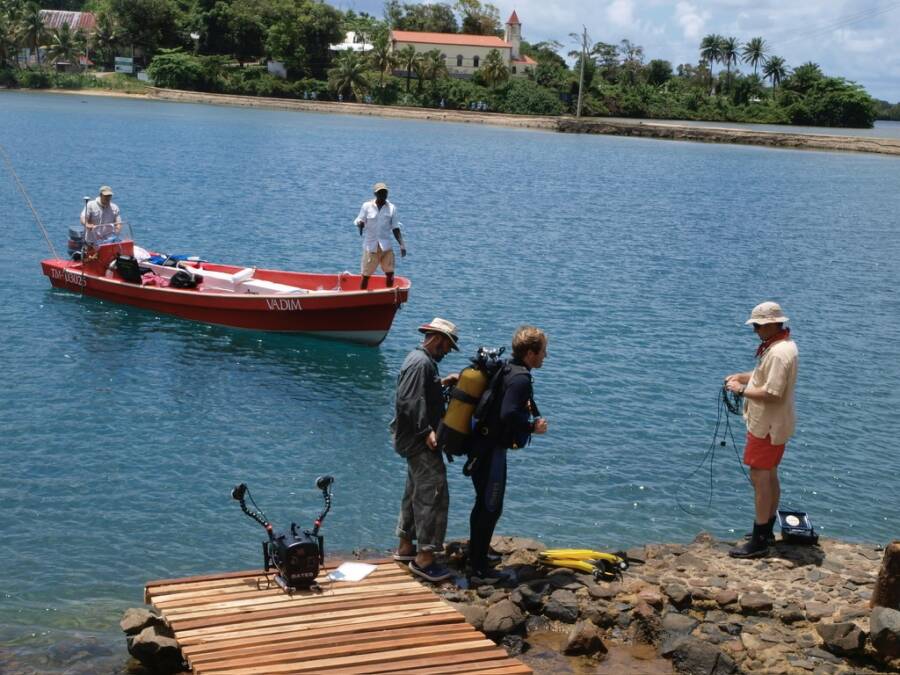
Center for Historic Shipwreck PreservationArchaeologists believe that they’ve identified the Nossa Senhora do Cabo after more than two decades of fieldwork.
In the 18th century, the Nossa Senhora do Cabo was described as a “massive 72-gun former Dutch man-of-war turned Portuguese treasure ship… heavily laden with diplomatic, religious, and economic cargo.” In 1721, it was en route from Goa, then a Portuguese colony in India, toward Lisbon.
But during its voyage, the ship was caught in a violent storm. It lost all of its masts and two-thirds of its cannons, and it sought refuge near Réunion Island. There, the Nossa Senhora do Cabo was easy prey for pirates Olivier Levasseur and John Taylor, who easily seized the ship and its treasure.
“The pirates seized a staggering amount of treasure,” the Center for Historic Shipwreck Preservation notes, “which in the annals of history would become one of the richest pirate heists.”
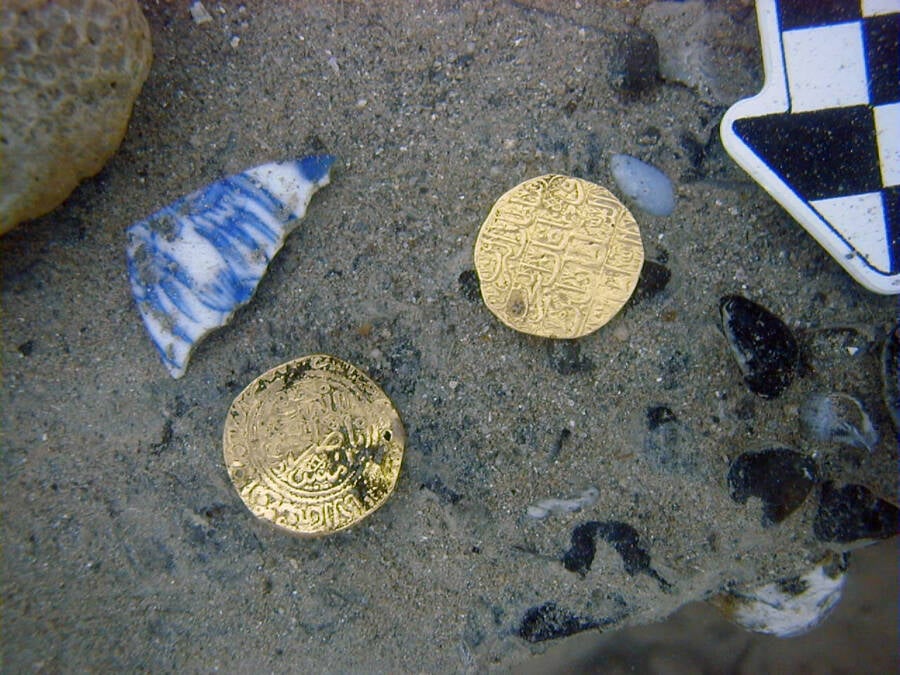
Center for Historic Shipwreck PreservationGold coins and porcelain fragments recovered from the shipwreck.
The ship’s cargo was likely worth $138 million in today’s currency and included “gold and silver bars, coins, silks, religious artifacts, and an extraordinary array of precious stones.” The ship was also carrying the former Viceroy of Goa and the Archbishop of Goa, the former of whom was ransomed, as well as some 200 enslaved Africans. At least 60 of the enslaved people were killed when the ship was taken, but the fates of the others are unknown.
From that point on, researchers aren’t entirely sure what happened to the Nossa Senhora do Cabo. The ship was seemingly scuttled near Madagascar, though not before it was commandeered and renamed Victorieux by Levasseur, who used it for a time as a pirate ship.
As such, the discovery of the Nossa Senhora do Cabo seems to have solved a centuries-old mystery about the lost ship. After being damaged in a storm and taken by pirates, the Portuguese treasure ship was ultimately abandoned. It’s spent the last three hundred years hidden in the deep, its remaining treasures scattered across the ocean floor.
After reading about the discovery of the Nossa Senhora do Cabo shipwreck, discover the stories of other famous shipwrecks from around the world. Or learn about the Wager mutiny, when the crew of the HMS Wager was stranded on a remote island — and forced to turn to cannibalism.





